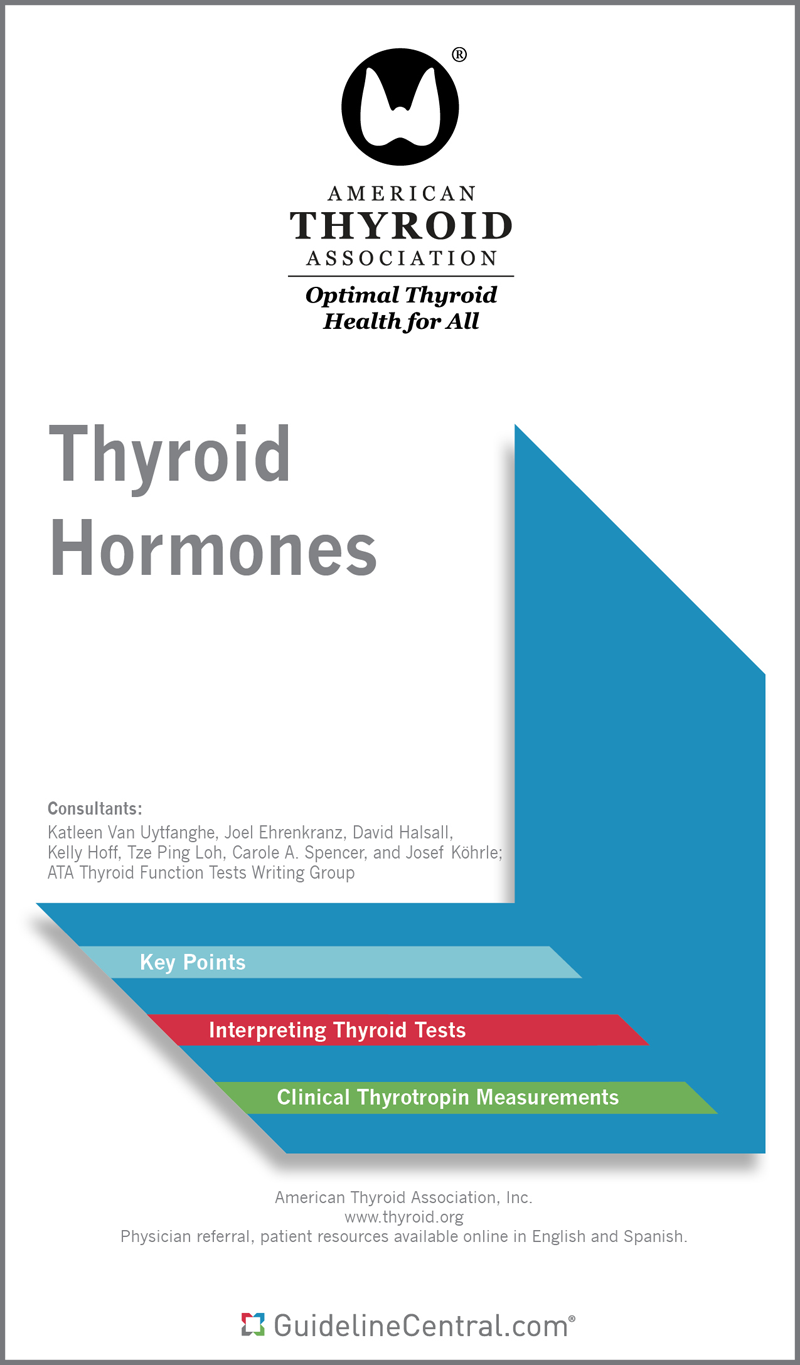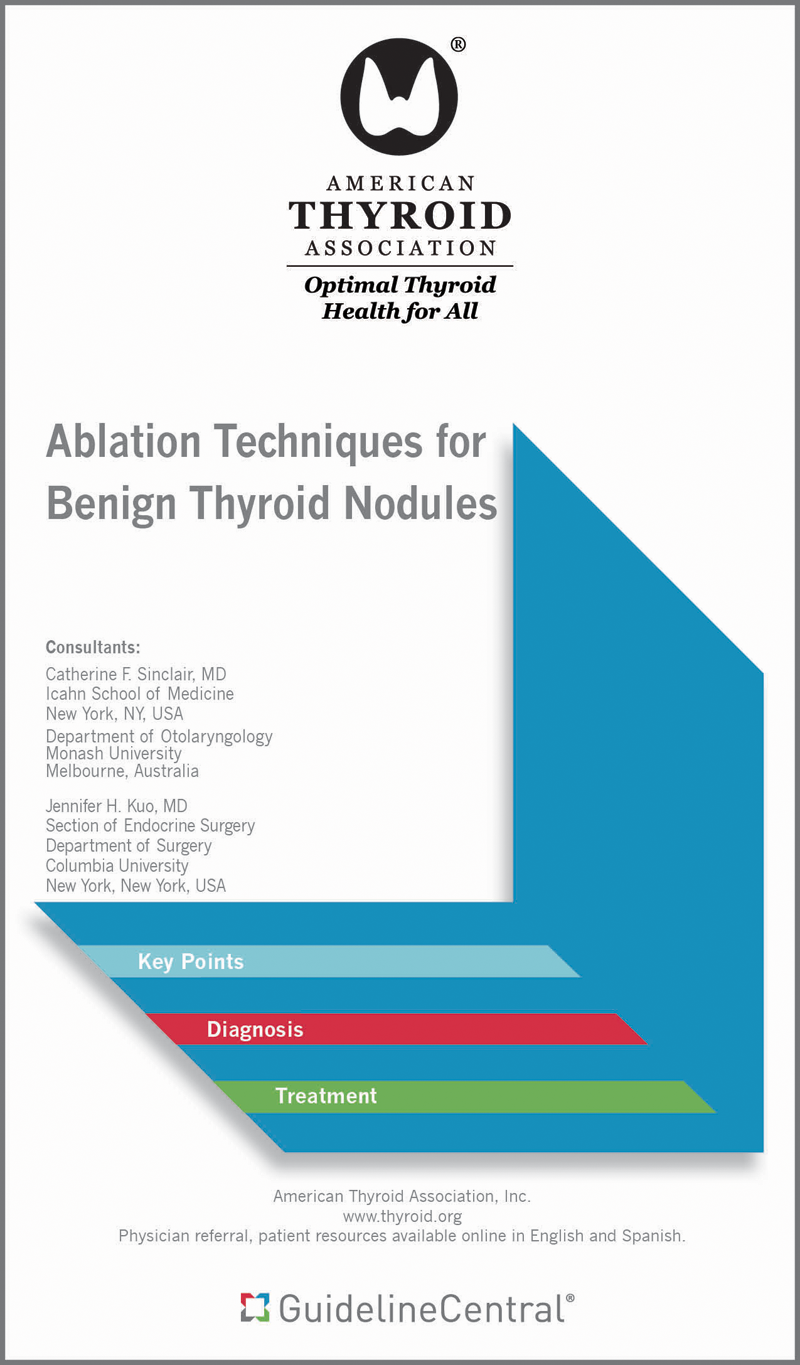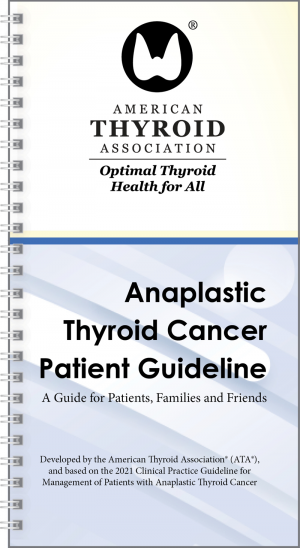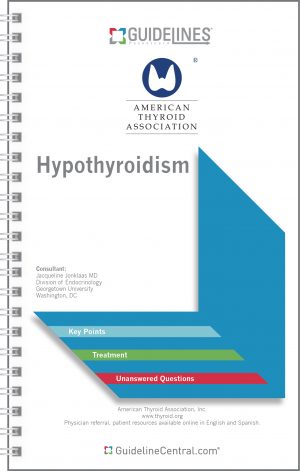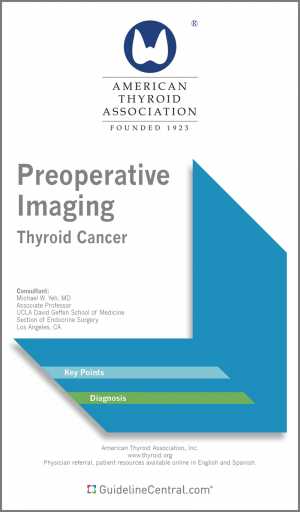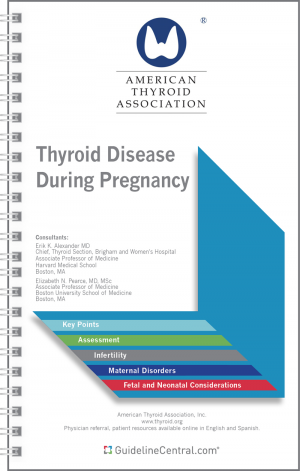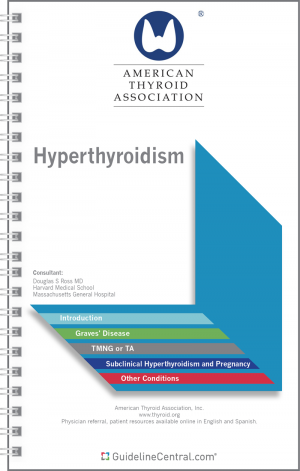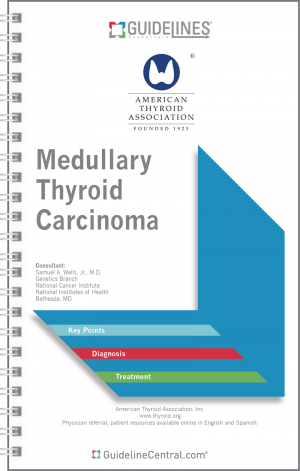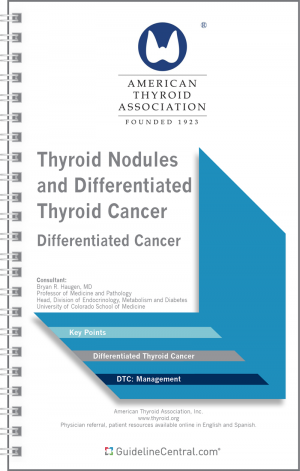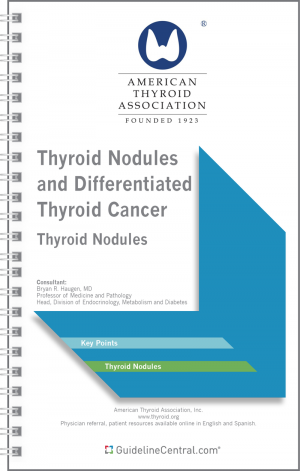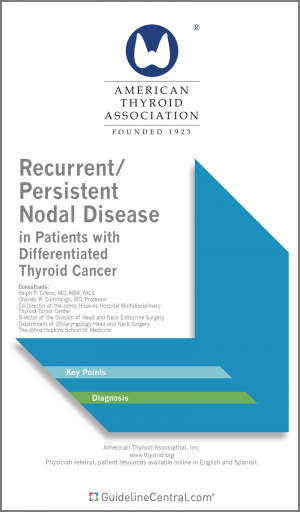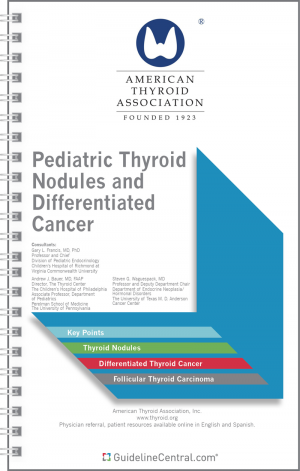Anaplastic Thyroid Cancer
Published: March 2021
$11.95
Print Copy Information:
- 28 pages
- Spiral Bound
- 80# Aqueous Coating
- 4.25" x 7.25"
- Ships in 5 – 10 business days
What's Inside
Bulk and Institutional Ordering
About the Authors
Additional Information
- Key Background
- Treatment Recommendations
- Terms and Definitions
- Definition of Therapeutic Terms
- Diagnosis
- Cytology, Histopathology, And Differential Diagnosis
- Initial Evaluations
- Treatment
- Establishing Goals of Care
- Surgical Management of ATC
- Radiotherapy and Systemic Chemotherapy in Locoregionally-confined (Stages IVA and IVB) ATC: Principles and Approaches
- Systemic Therapeutic Approaches to Locally Advanced Unresectable and/or Metastatic Disease
- Approaches to Bone Metastases
- Approaches to Other Sites of Metastases
- Approaches to Oligoprogressive Metastatic Disease
- Tables
- Key Steps in the Management of Anaplastic Thyroid Cancer
- Panel of Routine Immunohistochemical Markers for the Evaluation of Suspected Anaplastic Thyroid Cancer and Expected Results Compared to Other Tumor Types
- Initial Evaluation for Staging, Tests, and Procedures
- Informed Consent Checklist
- Airway Evaluation, Inclusion, and Exclusion Criteria for Resectability Before or During Surgical Intervention
- Examples of Concurrent (in Combination with Radiation Therapy) Chemotherapy Regimens in Patients with Anaplastic Thyroid Cancer
- Algorithms
- Initial Treatment of Stages IVA and IVB
- Stage IVC
- ATC Suspected Clinically
- For purchases under 100 in quantity, we suggest placing the order directly through the website.
- We offer group/institutional licenses for multi-user accounts (discount amount varies depending on the number of users).
- We are proud to offer special discounts to medical schools, training programs, students and more.
- We offer bulk purchase discounts based on number of copies and number of titles.
Contact Us for more details
Founded in 1923 the American Thyroid Association is dedicated to Scientific Inquiry, Clinical Excellence, Public Service, Education, and Collaboration.
Description
This pocket guide attempts to define principles of practice that should produce high-quality patient care. It is applicable to specialists, primary care, and providers at all levels. This pocket guide should not be considered exclusive of other methods of care reasonably directed at obtaining the same results. The ultimate judgment concerning the propriety of any course of conduct must be made by the clinician after consideration of each individual patient situation. Neither IGC, the medical associations, nor the authors endorse any product or service associated with the distributor of this clinical reference tool.
You can also find this product included in this bundle!


